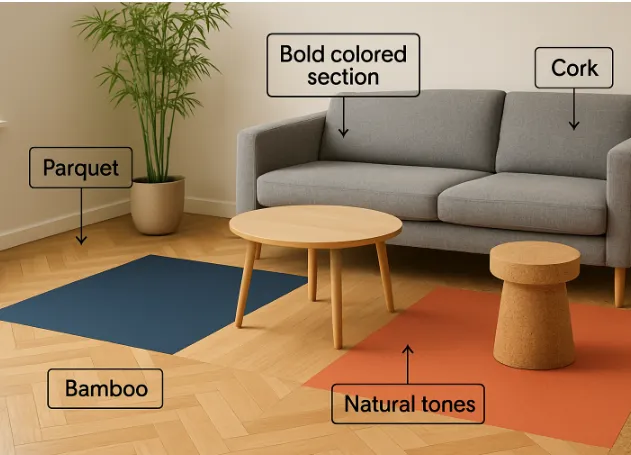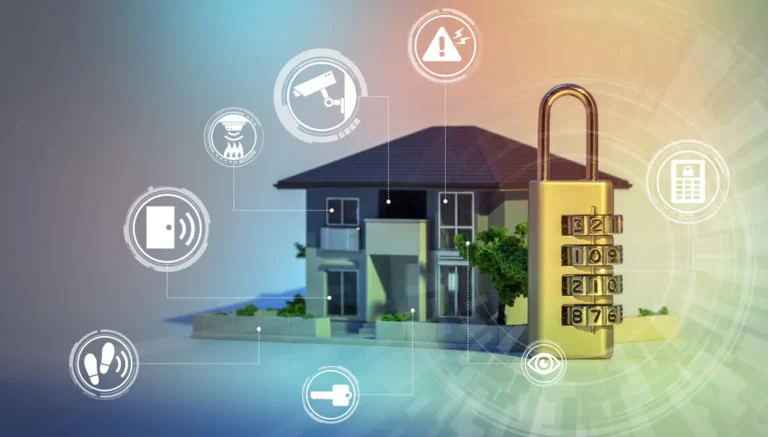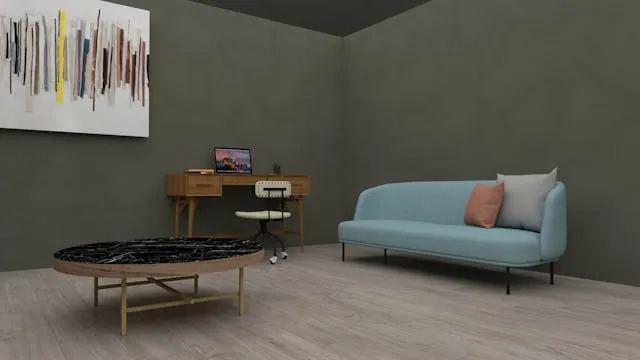Creative Flooring Trends for Modern Homes
Introduction
Modern home design is experiencing a flooring revolution, with innovative trends pushing the boundaries of style, sustainability, and function. From the revival of classic patterns to eco-friendly materials, today’s options cater to homeowners looking for beauty and practicality. If you’re considering upgrading your surfaces, partnering with a trusted hardwood flooring company in Tulsa can help you make informed decisions about installation, materials, and long-term care.
Flooring has become a key focus in creating distinctive interiors. With new technologies and design aesthetics, expressing personality underfoot is easier than ever while improving comfort and value throughout your home. Whether you crave natural textures, bold colors, or innovative features, the latest flooring trends can transform ordinary spaces into extraordinary ones.
Also Read: Strengthen Your Home: Choose Quality Windows, Doors & Siding
Parquet Flooring with a Contemporary Edge
Parquet flooring, once considered charmingly traditional, is enjoying a significant renaissance. Rather than old-fashioned squares, today’s parquet favors oversized designs and eye-catching geometric patterns such as herringbone and chevron. These arrangements amplify a sense of luxury and intricacy, particularly suited to entryways, dining rooms, or open-plan living spaces. As customization grows popular, homeowners commission unforgettable, artistic layouts that serve as a foundation and focal point.
Sustainable and Recycled Materials
The shift toward eco-conscious living extends to every home design corner, and flooring is no exception. Bamboo and cork have surged in popularity as renewable options boasting natural warmth, resilience, and visual interest. Engineered wood, often made from responsibly sourced timber, melds environmental responsibility with the durability modern life demands. Many sustainable surfaces are compatible with underfloor heating, ensuring energy efficiency and comfort during colder months. For further tips on sustainable design, explore the latest innovations featured by Architectural Digest.
Bold Colors and Patterns
Gone are the days when flooring had to blend into the background with safe, neutral tones. Rich hues—like sapphire blue, emerald green, and burgundy—bring a sense of sophistication and drama to contemporary interiors. Paired with playful geometric patterns or oversized motifs, these colors help create bold statements in hallways, kitchens, and bathrooms. Herringbone and chevron arrangements add energy, making even the most utilitarian rooms feel custom and curated.
Also Read: McNamara TheHomeTrotters: A Journey of Travel and Home
Technological Integration in Flooring
Flooring is evolving beyond aesthetics, becoming a functional aspect of modern smart homes. Interactive tiles embedded with sensors, programmable heating, and LED lights are becoming more accessible. These innovations offer ambient pathways, mood lighting, or even interactive games that can entertain or assist those with reduced mobility. Such features highlight a shift towards beautiful, intelligent, living spaces. According to resources from Architectural Digest, the future of home flooring is as much about innovation as it is about style.
Natural Materials and Textures
The enduring appeal of nature-inspired interiors keeps natural wood and stone at the forefront of flooring trends. Hardwood floors in warm hues provide an inviting backdrop, reminiscent of rustic retreats and calming getaways. Meanwhile, the search for “natural stone floor” has spiked online, indicating growing interest in authentic, tactile surfaces that add character to kitchens, bathrooms, and living spaces. These choices lend homes a timeless, layered look that complements minimalist and maximalist décor.
Large Format Tiles
Large—format tiles—those exceeding 24 inches per side—are making a bold statement in contemporary homes. With fewer grout lines, these oversized tiles create an expansive, seamless appearance that visually enlarges any room. They’re especially popular for open-concept kitchens and living areas, where clean lines and a sense of flow take center stage. Large tiles are also easier to maintain, offering both form and function for busy households.
Multifunctional Spaces and Versatile Flooring
As modern homes evolve into dynamic, multifunctional spaces serving as offices, gyms, classrooms, and sanctuaries, flooring must rise to meet these diverse demands. Designers now embrace zoning techniques to create visual and functional boundaries within open layouts, eliminating the need for physical walls. Using varied materials, textures, and colors, they can subtly distinguish zones—such as soft carpets for relaxation areas and durable hardwood for high-traffic workspaces. This thoughtful layering of flooring enhances aesthetic flow and improves comfort, productivity, and organization. Ultimately, adaptive flooring design supports lifestyle flexibility and long-term functionality within today’s versatile homes.
Embracing Quiet Luxury
The “quiet luxury” movement shapes high-end interiors; its impact is clearly visible in flooring choices. Dark-stained hardwoods, elegant marbles, and other premium materials infuse spaces with understated opulence. Unlike fleeting trends, these materials promise lasting beauty and sophistication, embodying investments in durability and design that stand the test of time.
Modern flooring trends capture the perfect harmony between design innovation, environmental responsibility, and individual expression. Homeowners today are embracing materials that look stunning and promote sustainability, such as eco-friendly hardwood alternatives, recycled tiles, and low-VOC finishes. The revival of classic styles like parquet and herringbone adds timeless character, while cutting-edge options like waterproof vinyl, hybrid flooring, and smart underlays enhance durability and comfort. These evolving trends empower homeowners to create interiors that balance aesthetics with function—spaces that feel both contemporary and enduring, stylish yet practical, all while supporting a more conscious and sustainable approach to home living.







